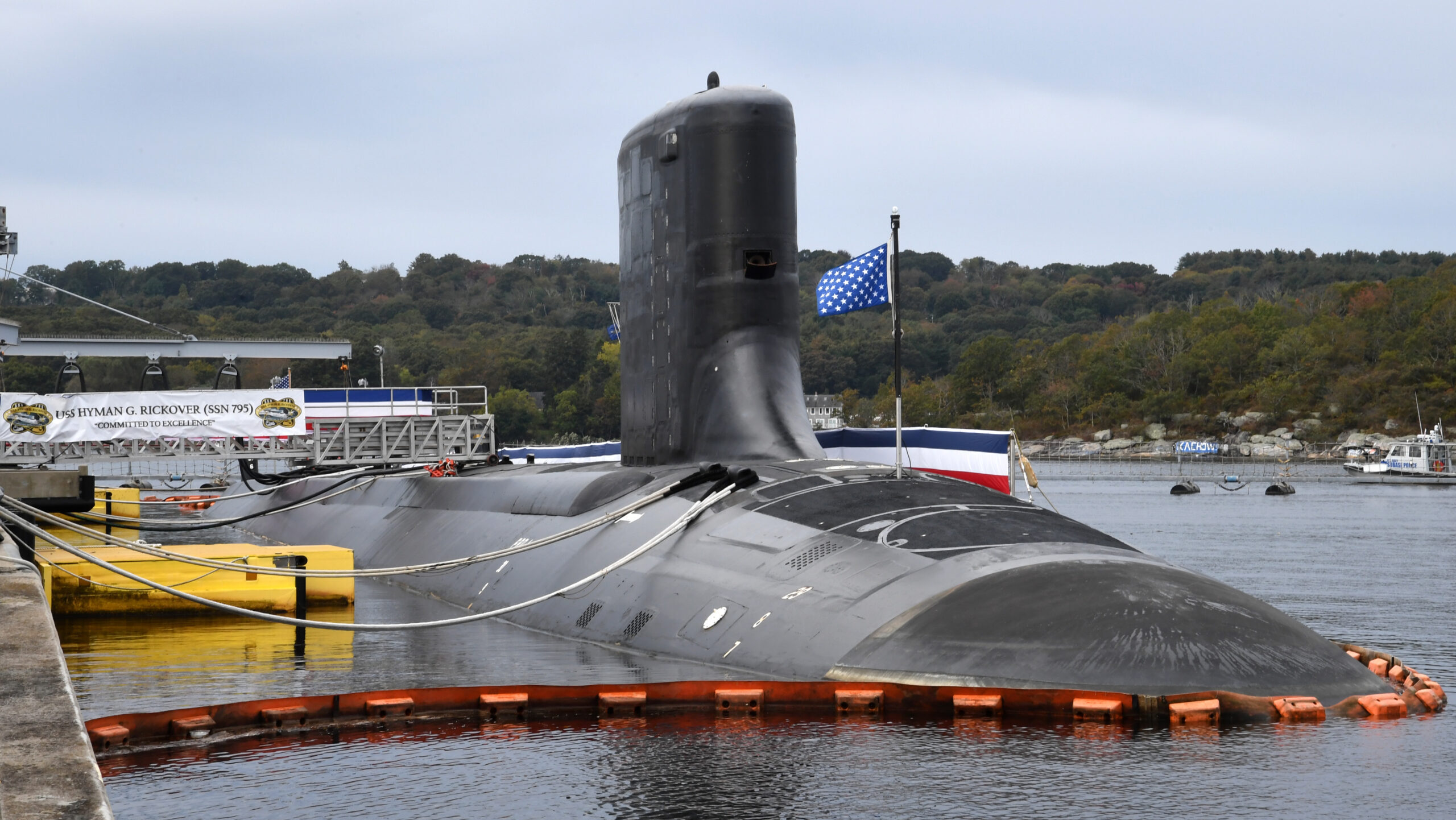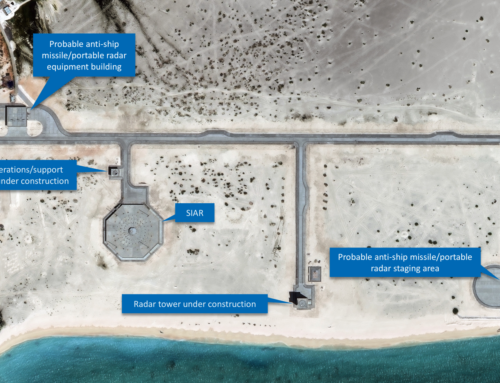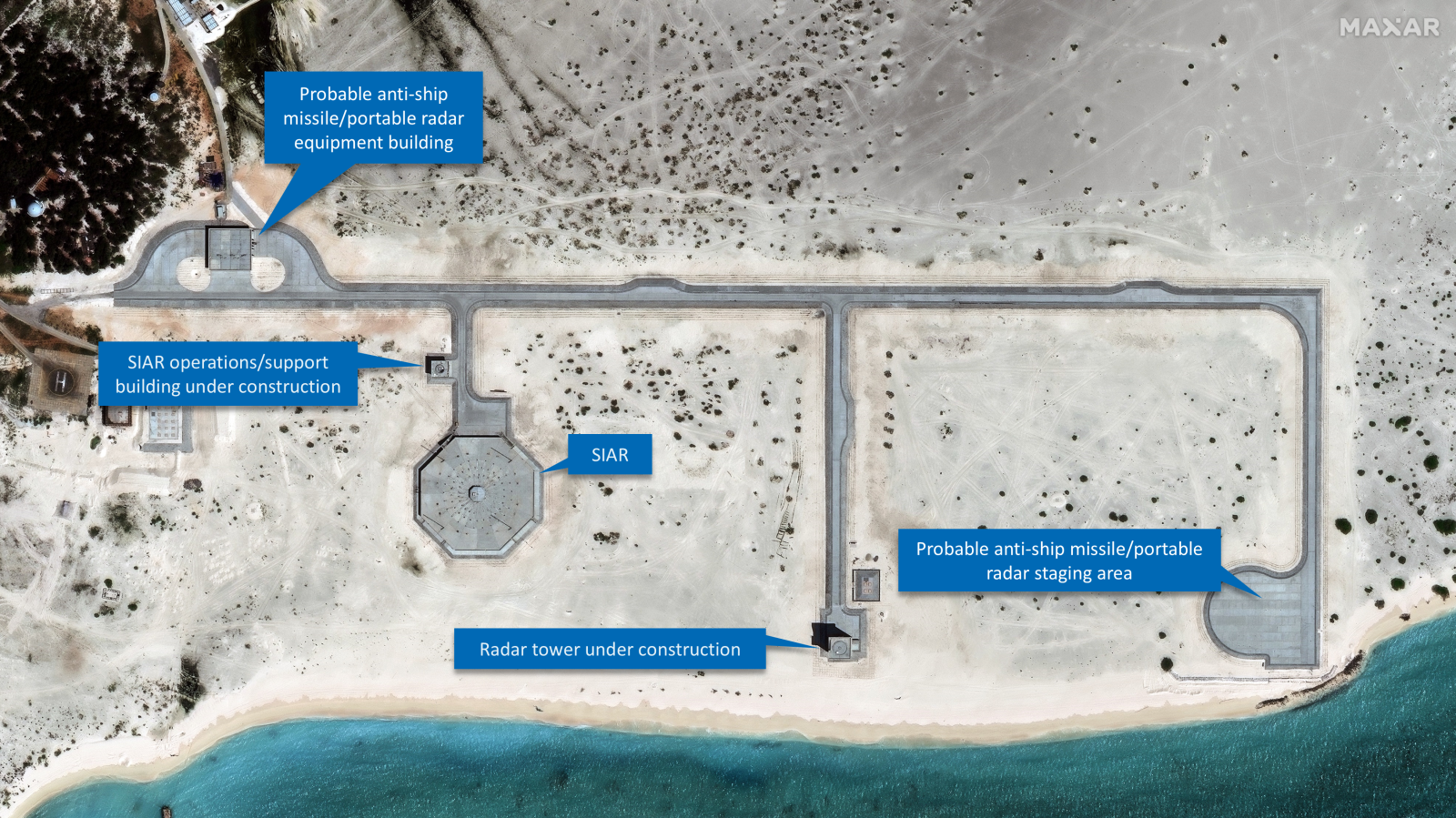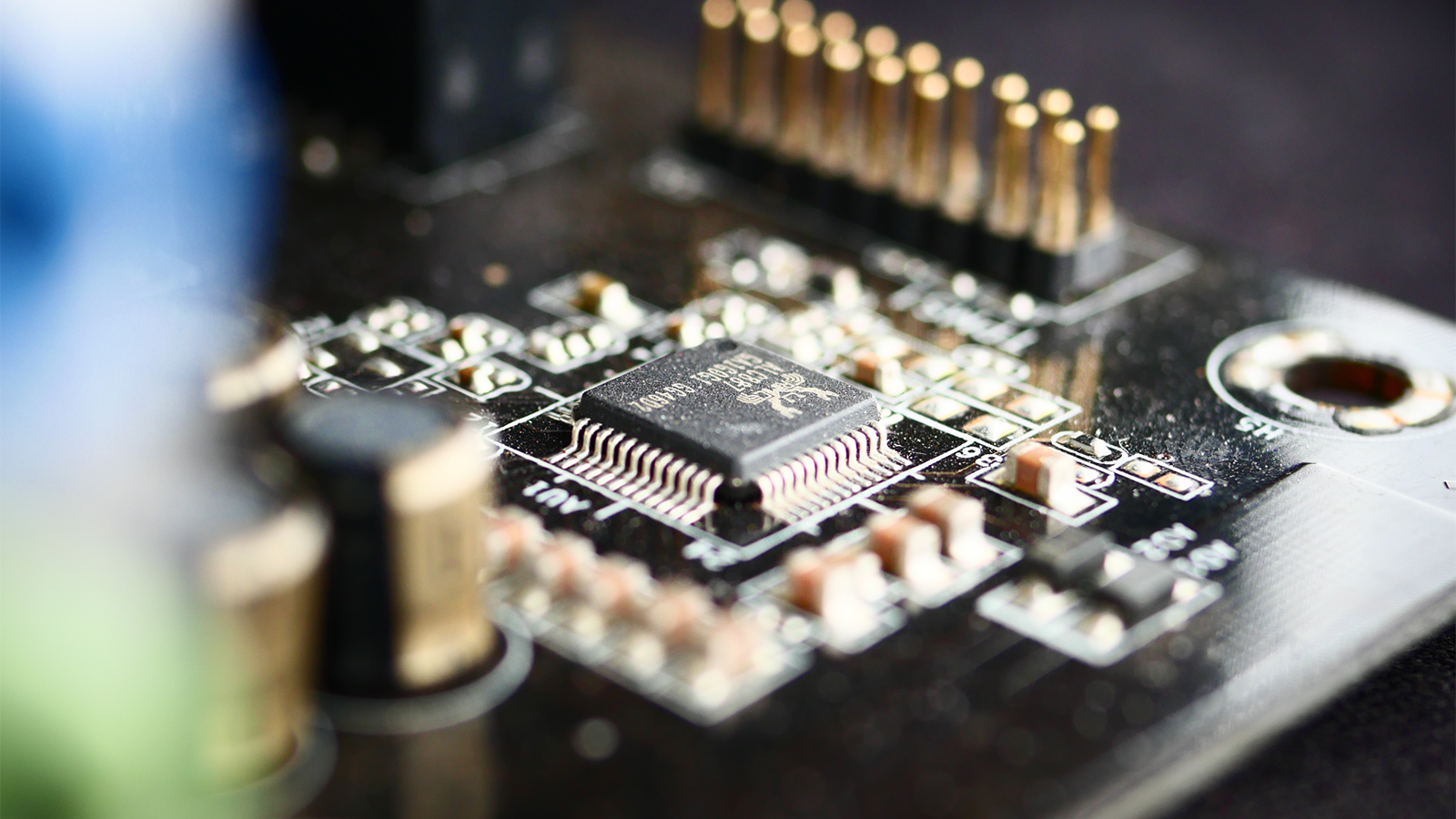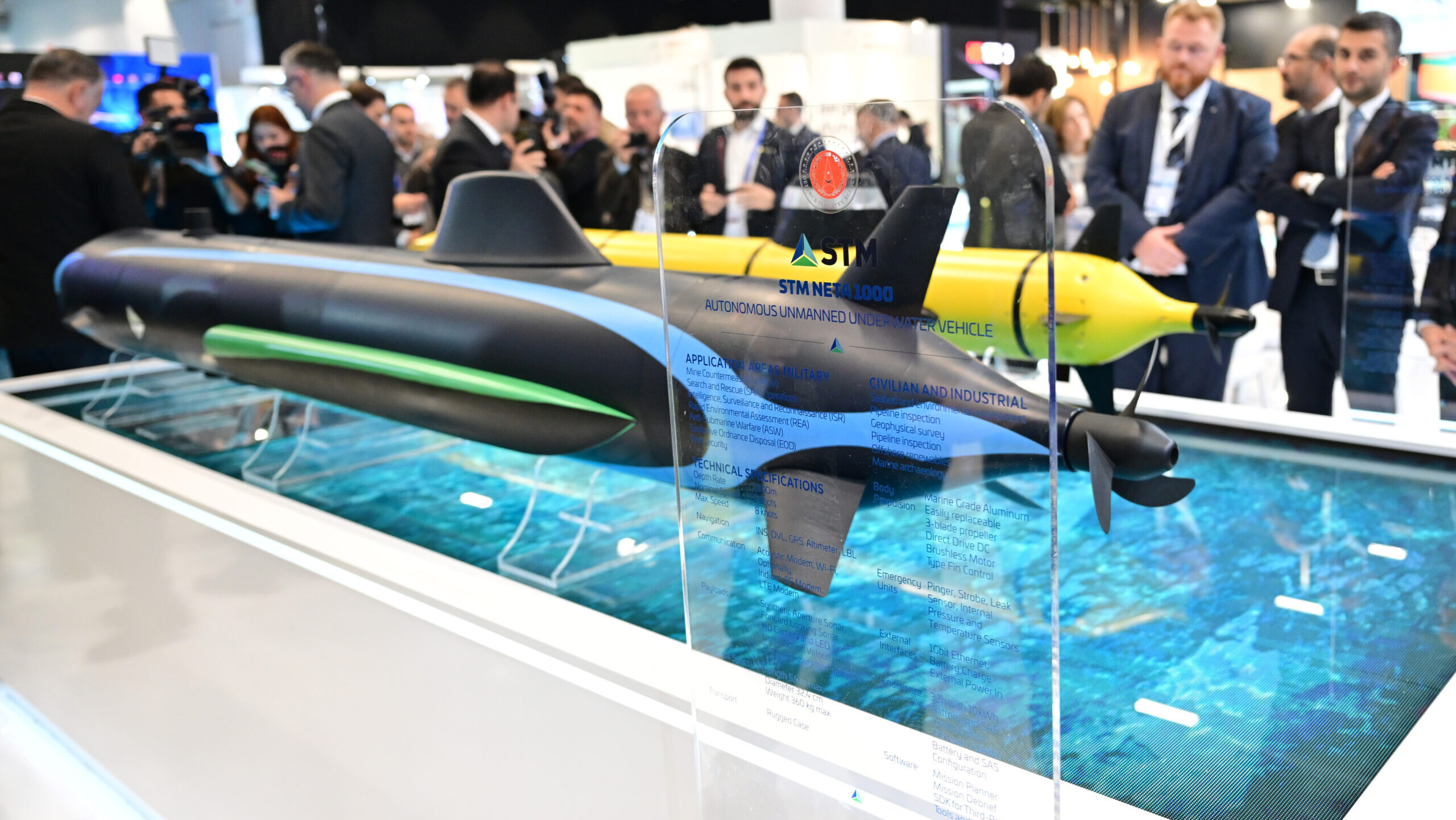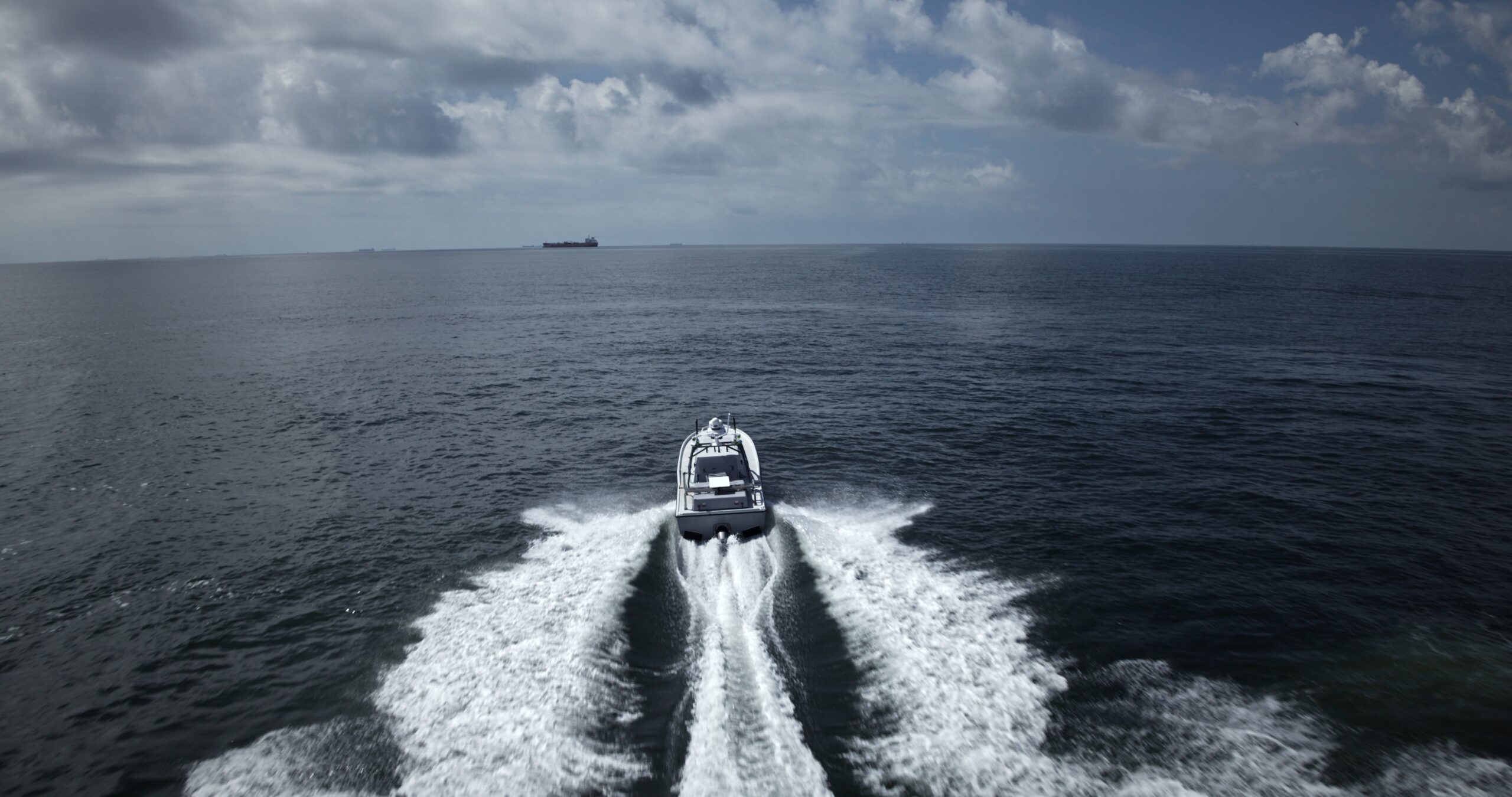USS Hyman G. Rickover (SSN 795) is moored pierside during a commissioning ceremony at Naval Submarine Base New London in Groton, Connecticut on October 14, 2023.(U.S. Navy photo by Chief Petty Officer Joshua Karsten)
WASHINGTON — General Dynamics Electric Boat isn’t getting what it needs from its supply chain on time, a fact that could put its remit to deliver two Virginia-class attack submarines per year under “considerable pressure,” the CEO of parent company General Dynamics said today.
“The supply chain is not getting better at a fast enough rate as we had hoped,” said Phebe Novakovic during an earnings call with investors. “Through our internal efficiency, we have now outpaced them. This is the reality of the post-COVID environment for many of our most important suppliers.”
While the health of some pockets of the submarine industrial base are improving, Electric Boat continues to be “severely impacted” by late deliveries from suppliers of major components, which is driving up costs and lengthening production schedules, Novakovic said. She added that the Navy’s most recent delivery schedules reflect the supply chain delays.
Specifically, Novakovic pointed to out-of-sequence work as one major cause of cost increases and schedule changes. Shipbuilders like Electric Boat plan out a specific order in which they assemble the countless parts and pieces that ultimately make up the hull form of a submarine. It’s not unusual for a shipbuilder to occasionally receive a late delivery and adjust their plans accordingly. But, Novakovic said today the number of out-of-sequence deliveries Electric Boat is receiving is leading to work costing as much as eight times more than it would have under normal circumstances.
“We’re going to control what we control,” Novakovic said. “We’re going to adjust our pace to align with what we now see is more of a predictable supply chain schedule that is elongated. We’ll take cost out of our business, and we’ll continue to work productivity on the deck plates with an increasingly capable and skilled and experienced workforce.”
RELATED: GD Chief Says Navy’s 1 Sub Buy Won’t Impact Company Short Term, But Out Years Less Certain
Novakovic acknowledged that the Navy and Congress understand the industrial base challenges and have directed funding — to the tune of $11 billion planned for the immediate upcoming budget cycles — in order to help shore up manufacturing capacity, but said that further investments may be necessary.
“Costs are increasing — fact of life costs or economic realities — and funding is going to have to adjust to these fundamental changes in input, and that will need to happen over time,” she said.
Asked what components are driving the supply chain issues, Novakovic declined to lay out specifics but cited two areas of concern: small parts made by small suppliers, who are often the only source, and large complex parts, which are difficult and expensive to make, and have grown more so due to rising labor and material costs.
Earlier this year, Navy Secretary Carlos Del Toro disclosed that Northrop Grumman’s turbine generator is a major driver of schedule delays on the Columbia-class submarine. At the time Northrop said it was “fully committed” to that program and “fully supportive” of Electric Boat and the Navy.
Since the inception of the AUKUS trilateral security pact, the Navy and its submarine prime contractors Electric Boat and HII have come under increasing pressure to ramp up their construction cadences to deliver two Virginia-class boats per year. Recent historical trends show the industrial base producing closer to 1.2 boats annually on average.
Adding to that pressure, the service anticipates it will need to reach a 2.33 boats-per-year cadence to support both the US Navy’s needs as well as the obligations associated with AUKUS. (That schedule is in addition to at least one Columbia-class ballistic missile submarine being delivered annually, a cadence the Navy refers to as “1+2.”)
Asked whether the supply chain issues will harm the company’s ability to achieve that goal, Novakovic said it will remain a topic Electric Boat must work through with the Pentagon.
Former Under Secretary of the Navy Erik Raven announced during the service’s budget rollout earlier this year the Navy believes its efforts to bolster the industrial base will put it on track to achieve its desired cadence by 2028. More recently, Raven told Breaking Defense he believes supply chain and workforce inexperience remain the two biggest obstacles standing in the way.
Pentagon officials have characterized the jump from historical cadences to their goal in 2028 as being an increased “workload equivalent factor of five.”
As for General Dynamics, its executives have previously been optimistic about eventually reaching the Pentagon’s goal. Jason Aiken, then the company’s chief financial officer, last year told investors the company was on the cusp of achieving that threshold prior to COVID-19.
“So it is eminently doable in terms of the industrial base,” he said.


